フレデリック・カール・フリーゼケ (1874-1939)
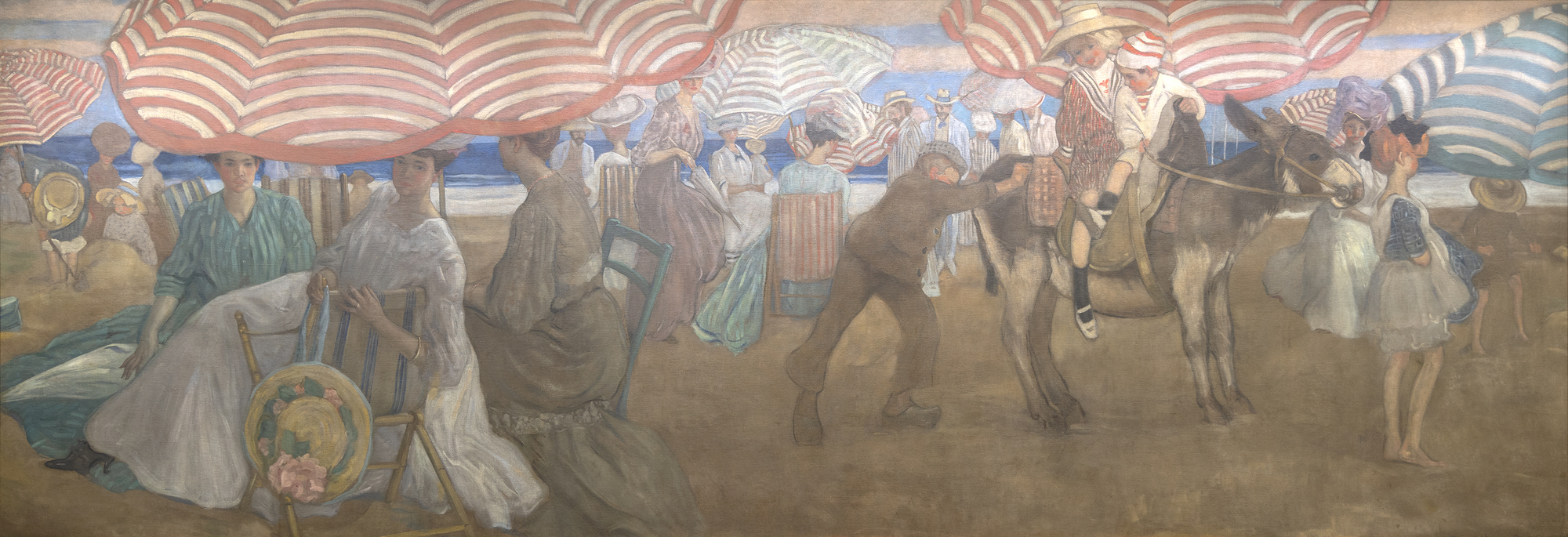
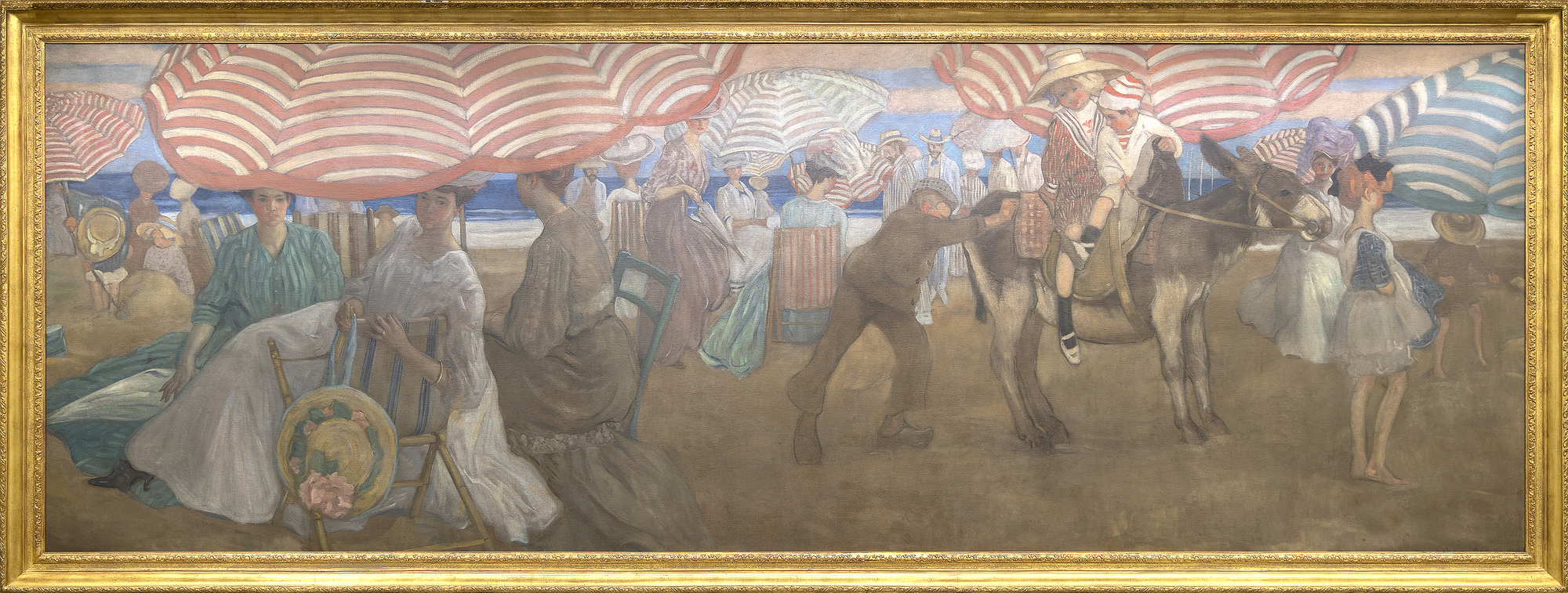
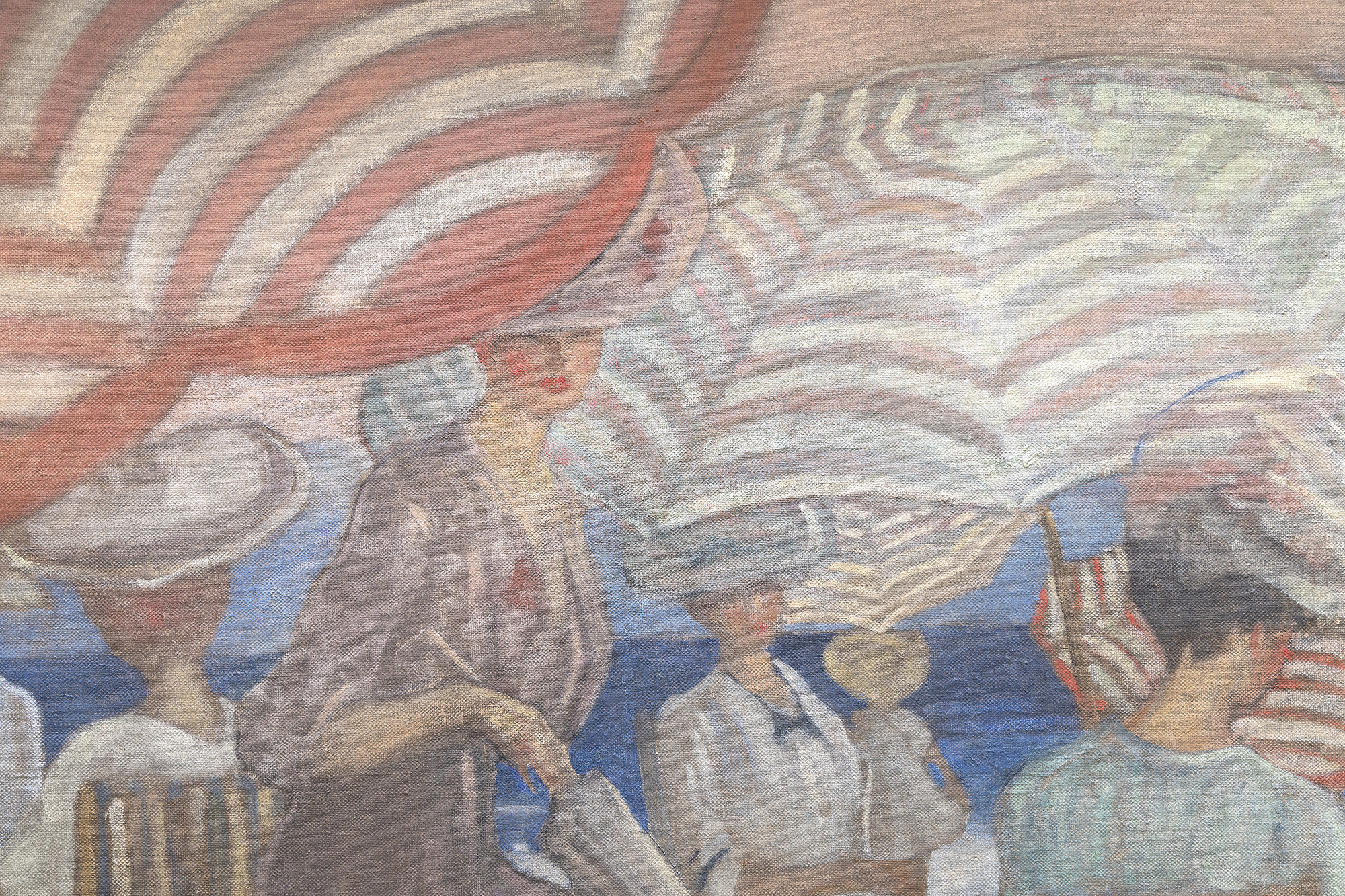
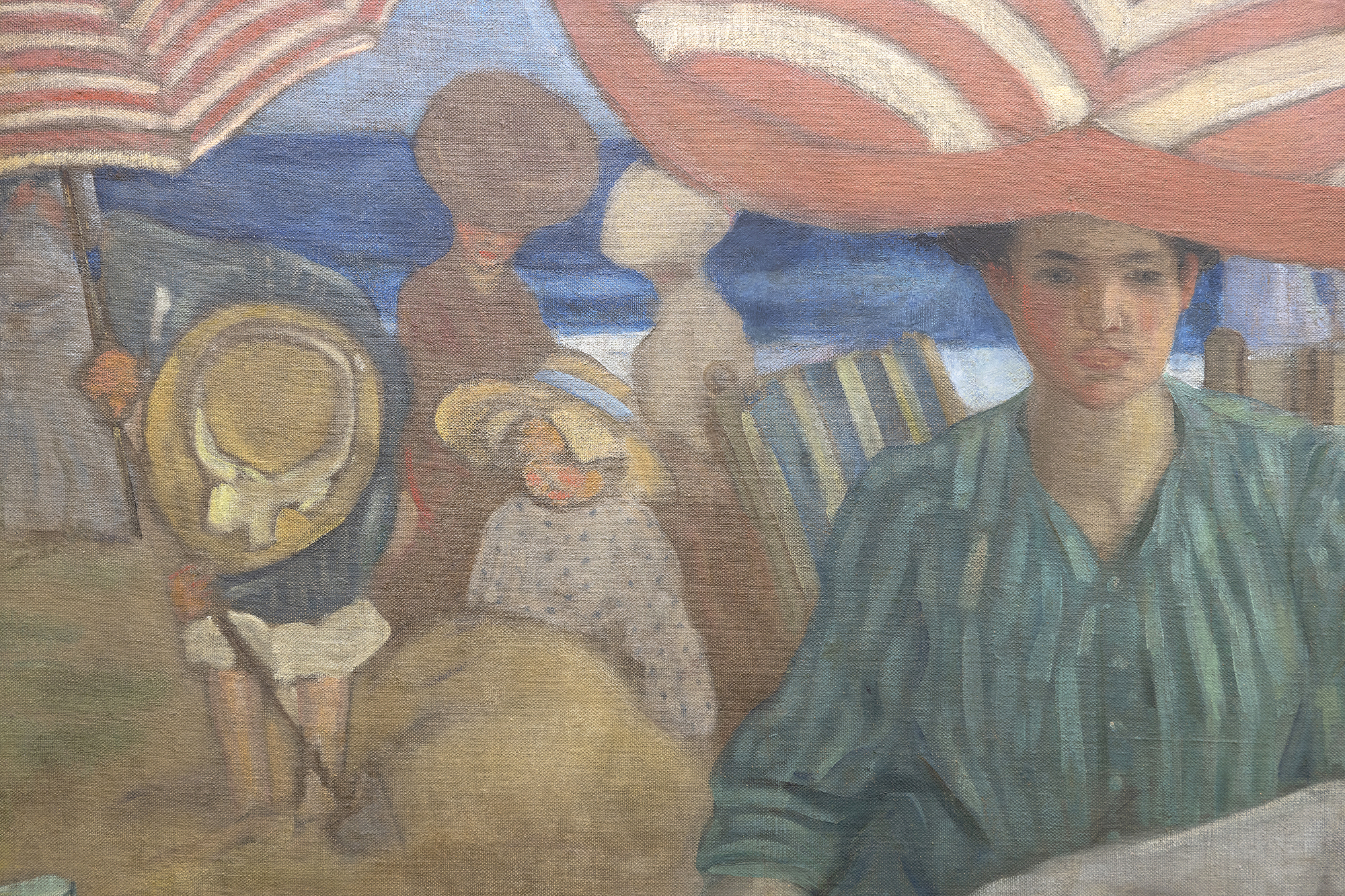
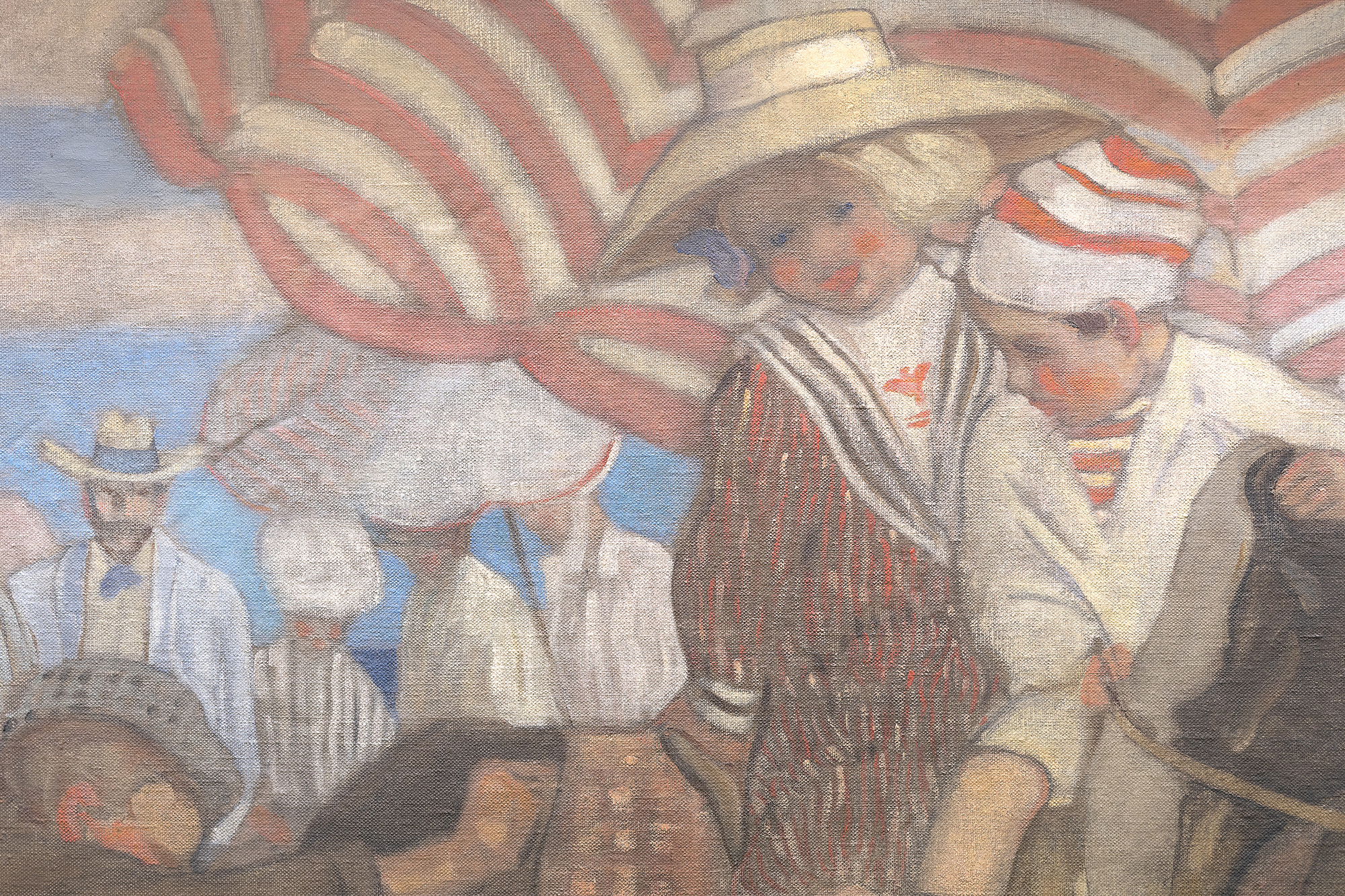
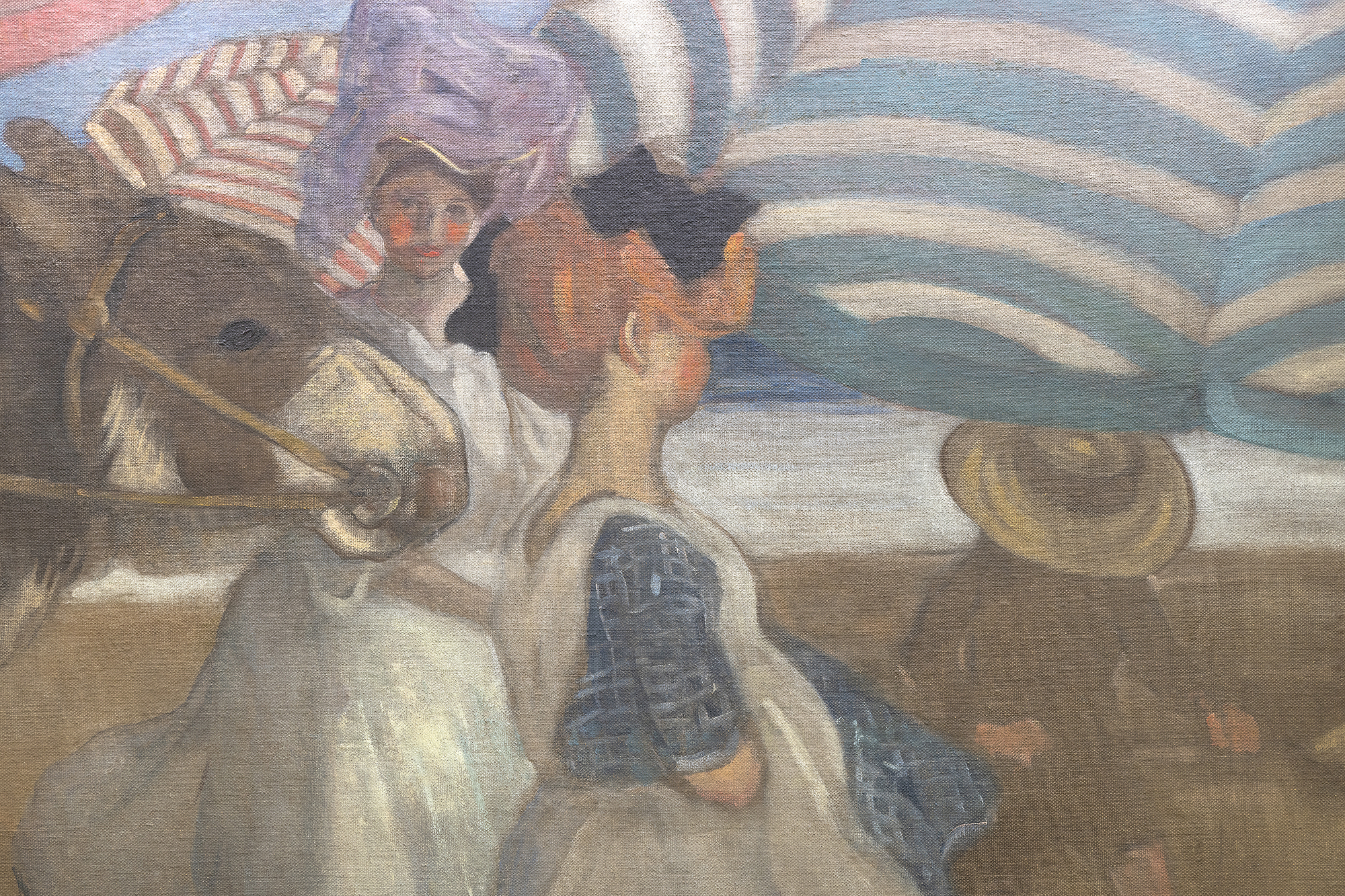
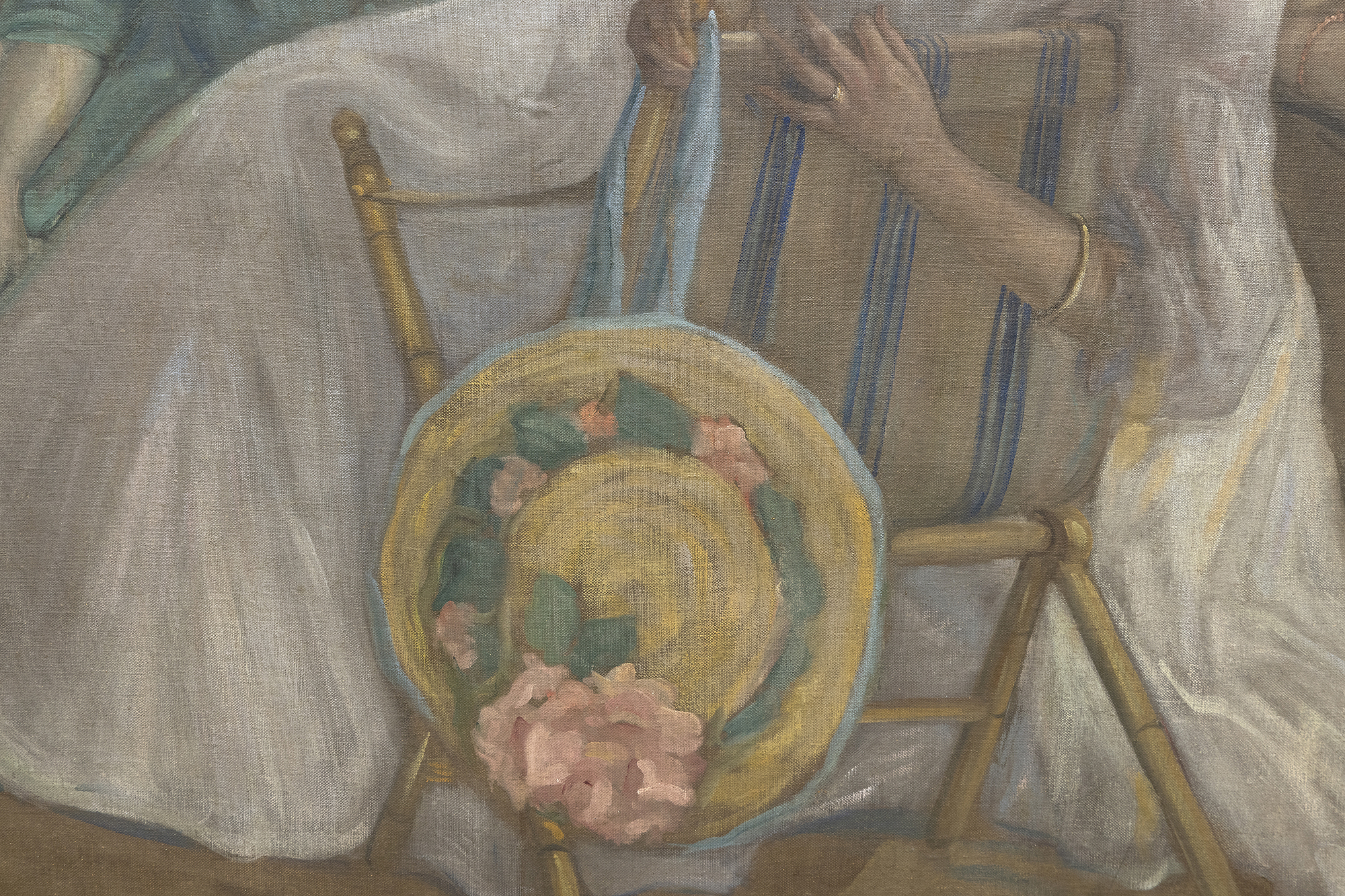
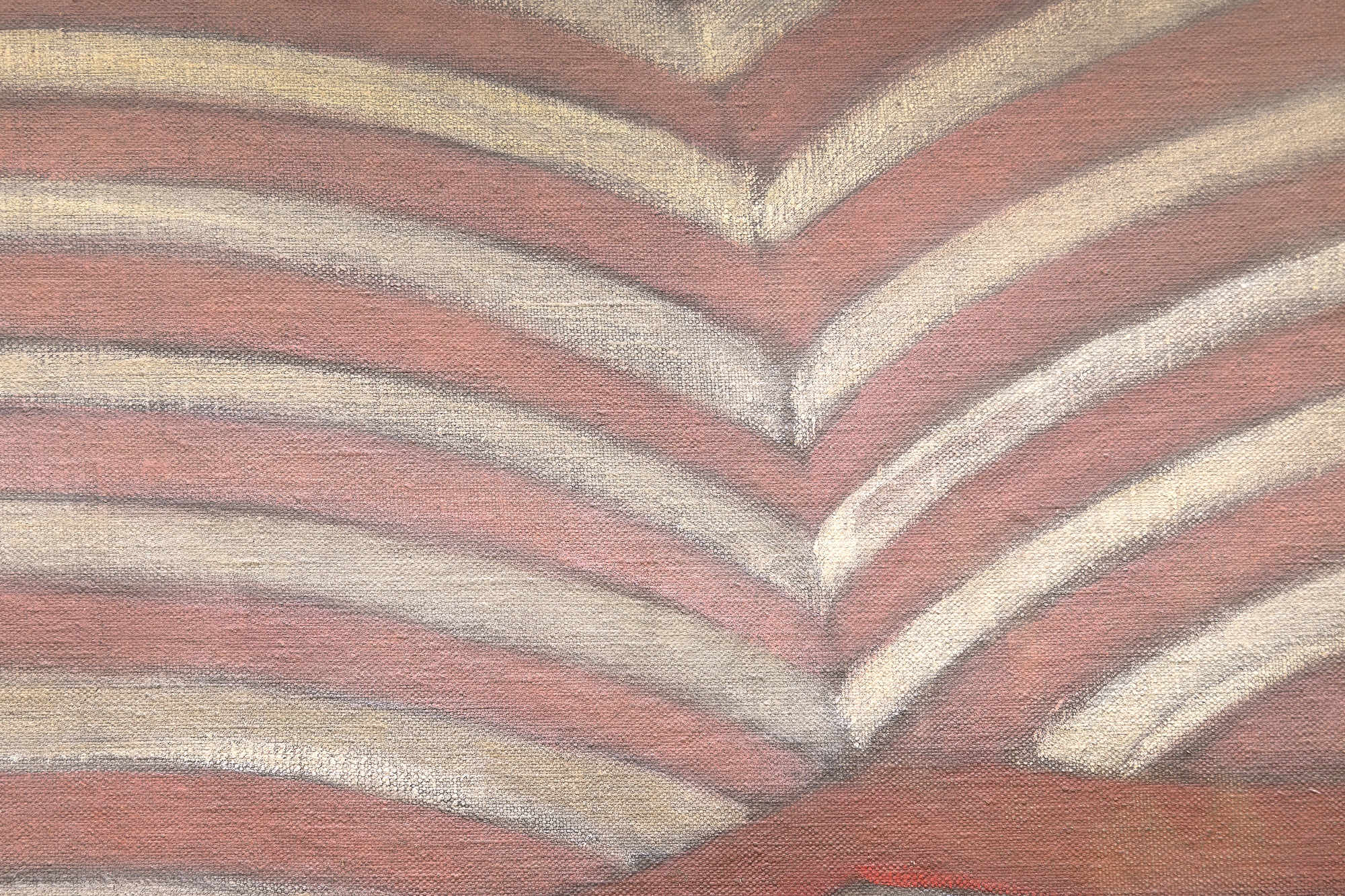
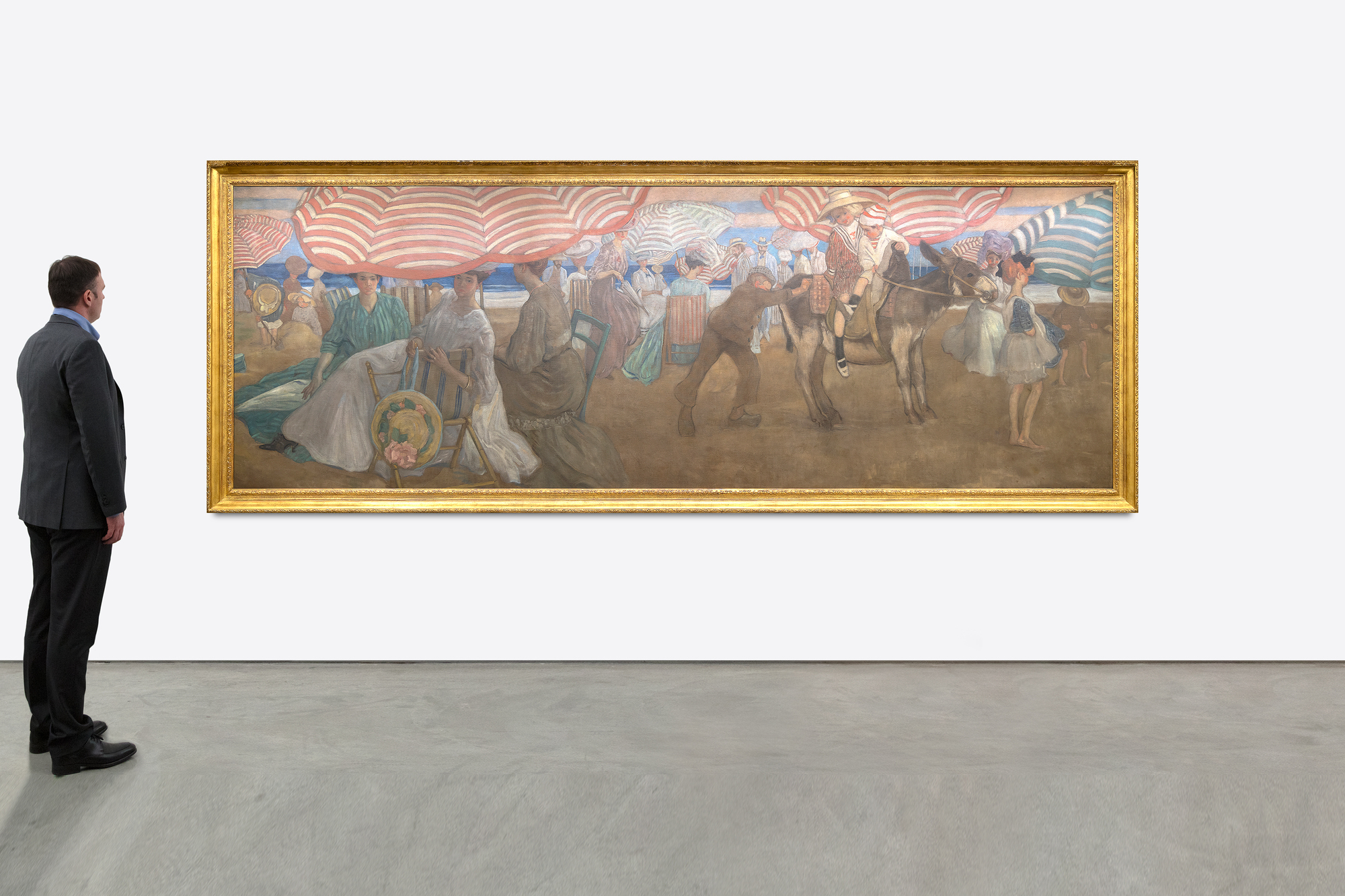

出所
アトランティックシティのホテル・シェルバーンのためにロッドマン・ワナメイカーの依頼により、デビッド・デビッド・ギャラリー(フィラデルフィアプライベートコレクション、カリフォルニア
ヘザー・ジェームズ・ファインアート
展示会
テルフェア美術館(ジョージア州サバンナ)、Frederic Carl Frieseke; The Evolution Of An American Impressionist(2000/2001年)、ディクソン・ギャラリー&ガーデン(テネシー州メンフィス)(2001年)、サンディエゴ美術館(カリフォルニア州サンディエゴ)(2001年)、テラ美術館(イリノイ州シカゴ)(2001年)に巡回。文学
N.キルマー『フレデリック・カール・フリーゼクス:アメリカ印象派の進化』プリンストン大学 U...もっとその。。。niversity press, 2000, p. 139 を参照。 International Studio An Illustrated Magazine Of Fine And Applied Art, Volume Forty-Three, 1911年3月、4月、5月、6月の第169号から第172号まで、「パリのアメリカ人アーティスト パリのアメリカ人アーティスト」263-270ページ。 L'Art Decoratif, Revue Mensuelle D'Art Contemporain, 8me Annee, 2 Semestre, Juillet 1906年~1906年12月;「La Decoration D'un Hotel Americain」195~200ページ...少ない。。。歴史
フレデリック・フリースケは、アメリカ印象派の最も優れた人物画家と評価されている。しかし、彼がアカデミー・ジュリアンに入学した1898年当時、レ・ナビの画家たちはまだその余韻を残しており、エドゥアール・ヴュイヤールやピエール・ボナールの豊かで装飾的な模様は、彼の初期の成功への青写真となった。アトランティックシティのボードウォークを見下ろす豪華なホテル・シェルバーンのダイニングルームに設置されたキャンバスの壁画「Afternoon at the Beach」では、ボリューム感のあるプリーツとストライプの傘が自由自在に繰り返され、その影響ははっきりと表れている。この反復的な要素の統一的なインパクトは、1910年から1920年の10年間に描かれた、より親しまれている絵画に見られる太陽光や色彩の崩壊の効果ではなく、ヴュイヤールやゴブラン織りの豊かさを思わせる色彩の中に雲のようにロフトがある舞台を吹き込んでいるのである。
海辺の午後」は、1906年2月に画家の指示のもとに設置された。この作品は、「ダイヤモンド・ジム」ことジェームズ・ブキャナン・ブレイディが週1,000ドルを払って永住するように誘ったこの高級ホテルで何十年も展示され、アーヴィング・バーリン、ジョン・フィリップ・スーザ、エセル・バリモア、アル・ジョルソンといった裕福な社会人、金融家、著名人が多く訪れた思い出として色あせない存在となったのである。大食堂の壁の高いところに飾られていたことが、この画家の人気と名声に貢献したことは間違いない。
今日、私たちはこの長いフリーズのような構図を、世紀末の楽しい衣装研究として、あるいは男女のグループ分けが示唆するヴィクトリア朝の風俗の有益な暴露として見ることができるかもしれない。しかし、「海辺の午後」には、家族、母性、社会的な文脈の中で表現された、女性に対する画家の抑えがたい喜びと感謝の気持ちが込められている。このテーマは、大西洋の両岸で賞賛と賞をもたらし、今日に至るまで、アメリカの具象画家の中で最も愛されている画家の一人に数えられる多くの人々に愛されています。
美術館所蔵の絵画
ノースカロライナ美術館(ローリー
ロサンゼルス・カウンティ・ミュージアム・オブ・アート
ティッセン・ボルネミッサ国立美術館(マドリード
ヒューストン美術館
メトロポリタン美術館(ニューヨーク)
ザ・ハンティントン(カリフォルニア州サンマリノ市
ナショナル・ギャラリー(ワシントンD.C.)。
シカゴ美術館
イメージギャラリー
認証
フレデリック・カール・フリースキー:アメリカ印象派の進化 」展のリンダ・マクウォーターによるカタログの139ページに、「Afternoon at the Beach」が掲載されています。この展覧会とそれに対応するカタログは、ジョージア州サバンナにあるテルフェア美術館が制作したものです。このカタログでは、「Afternoon at the Beach」が歴史あるホテル・シェルバーンの壁画として描かれたユニークな起源を紹介しています。
お 問い合わせ
こちらもご覧ください






































